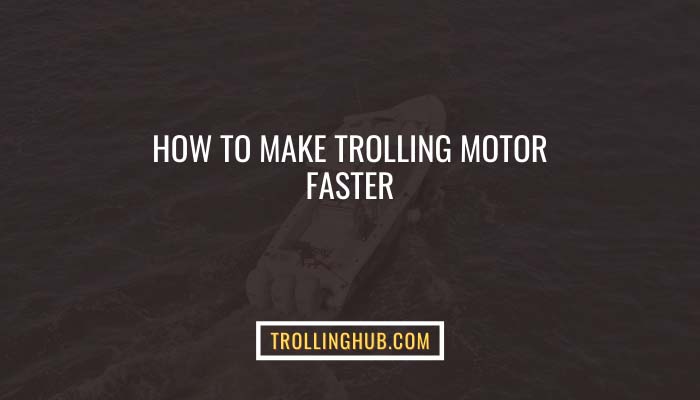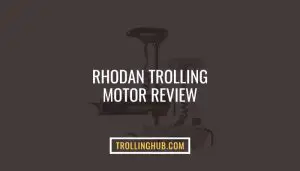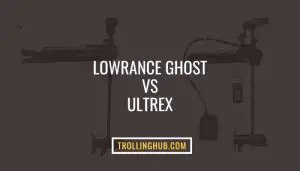
If you see a trolling motor progressing slowly, you should investigate why. It might be anything simple, like a fishing line hooked in your propeller, or something far more severe that necessitates the inspection of a repair shop specialist. As a result, the subject of “how to make trolling motor faster” emerges.
To begin, charge the batteries in your trolling motor to increase the speed of your boat. Your boat will not be able to move faster if your batteries are not sufficiently charged. Then proceed with the rest of the operation.
In the following section, you will find vital information to assist you in increasing the speed of trolling motors. Let’s get started!
How Fast Can A Trolling Motor Go?
First and foremost, dispel the myth that the amount of push dictates speed. If you’re looking for a motor, you need to determine the size of your boat.
Fitting a vessel’s motor to your boat will not make it quicker. Assume your fastest running speed is when you consume 1kg of food; what happens if I compel you to eat 5kilos of food? You’re going to be slower, aren’t you?
The same is valid for motors. We performed many studies to determine what aspects influence the speed, and believe me, the expensive motor isn’t one of them.
In a 12V system, 30 lb. thrust will typically consume 8 watts. The maximum speed of the trolling motor is roughly five miles per hour, regardless of how much power it delivers.
A full speed of 5 mph may appear modest, but this makes them ideal for fishing. If you prefer spending time in rough seas with fast-moving currents, investing in a trolling motor with higher thrust is an excellent choice.
Moreover, a 55 lb trolling engine has a top speed of 5 miles per hour. 55 lbs. thrust trolling motors are often not ideal for big boats, fast currents, or powerful ocean tides due to their construction and nature.
A 70pounds thrust trolling engine will go at roughly 8 miles per hour or 15 kilometers per hour. If you mount this motor on a large boat, it will reduce the speed. However, if you put this motor in a bit of craft, the speed will not improve.
How Fast Can A 112 Pound Thrust Trolling Motor Go?
A 112-pound thrust trolling motor will eventually have a top speed of roughly five miles per hour. More significant is better for faster response times and general performance.
Nothing is more infuriating than being close to a beautiful fishing site but unable to attract any fish due to weather conditions. You may solve this issue by using a thrust Trolling Motor.
They perform admirably in strong winds and waves. You can battle against strong currents or tides by adjusting the pace and power. So, if you’re looking for a trolling engine that can handle even the most difficult situations, this one’s for you.
THRUST AND SPEED relation
A widespread fallacy concerning trolling motors is that increasing thrust increases engine peak speed. Regrettably, that’s not the truth.
Speed is determined by prop pitch and engine RPM. The anticipated speed of an engine pushing a sailboat may be calculated using the engine’s RPM at load with Minn Kota company’s 4-inch prop pitching.
Prop pitch in inches multiplied by engine RPM multiplied by 85 percent equals computed inches per minute. This number multiplied by 12 represents the expected feet per minute.
Feet per minute multiplied by 60 equals computed feet per hour. The added miles per hour are the feet per hourly divided by 5280.
Its size and weight dictate the thrust needs of your boat. When fully loaded, we recommend using a trolling machine with at least 2 lbs of torque per every 100 lbs of boat weight.
This advice is based on typical pond fishing circumstances. As you frequently fish in strong winds, rivers, or poor weather conditions, you may want to choose a higher thrust motor.
What Causes Trolling Motor To Slow Down
Sometimes you realize that the power of the trolling motor has decreased, and you’re not sure why. There might be several causes for this, and we’ll go through the most relevant ones today.
Your battery is about to die
To examine your boat battery or batteries, use a multimeter. You can acquire one of these at any car or boating store.
The connection is faulty
It is another typical cause of power outages. Inadequately crimped or rusted connections involving your battery and the engine will likely cause certain parts or wires to become heated.
Battery Terminal Corrosion
Corrosion is seen on battery terminals and electrical connectors. Look for a white or brown deposit on your battery terminals or anywhere two or more wires connect.
Prop Shaft Error
Something wrapped around the prop is another typical cause of loss of power and speed. This is most often a fishing line, rope, or vegetation. Moreover, it commonly causes a tripped breaker or a blown fuse.
The trolling motor is getting old and worn out
A trolling motor will wear and tear over time. It may not use power as effectively as it should, consuming more energy and emptying the battery quickly.
Water is present in the Lower Section
Damage to the bottom unit housing gaskets might allow water to enter, slowing or shutting down your engine. Always try to drain it or pay attention to no water being clogged there.
Electronics failure
If you have got a 5-speed trolling engine, the speed controller may be broken and has to be replaced. So, keep your eyes on the electric failure.
How To Make Trolling Motor Faster
It’s relatively simple to solve the problem after identifying the source of the poor speeds. Here are a few suggestions for increasing your motor’s speed and acceleration.
Method 1: Replace the batteries in your trolling motors
You must charge the batteries of your trolling motors to increase the speed of your boats. Your boat will not be able to move faster if your batteries are not sufficiently charged.
It may be due to aged batteries, which can impact production. As a result, you must replace them as soon as possible and obtain fresh, strong batteries.
Method 2: Get Rid of the Extra Weight
Keep in mind what your vessel’s maximum weight is. Going above the weight limit might cause the kayak to topple over.
Motors, like other pieces of equipment, have weight limitations. Reduce the amount of weight as much as possible while keeping only the necessary equipment.
Method 3: Replace worn-out engines with new ones
When trolling motors are used for a lengthy period, their quality degrades, and efficiency decreases. As a result, you must ensure that you acquire a new trolling motor after a certain period.
Method 4: Manage Your Trolling Motor Correctly
First, rinse your trolling motor with fresh water to remove any dirt. Even if your engine has a protective covering, saltwater can cause harm.
Method 5: Use a Propeller That Is Appropriate For The Boat
Check that the propeller on your trolling motor is in good operating order since it is critical to the speed of your boat. It would be advantageous to utilize a propeller appropriate for your boat to guarantee that it delivered adequate speed to your boat on the water.
Method 6: You should clean battery terminals
Disconnect the electricity while the motor is not in use. Check the battery connections for dirt or corrosion as well. If so, use fine-grit sandpaper or emery cloth to clean.
Method 7: Visit a Repair Shop
You might not be able to find out what’s wrong all of the time, especially if you’ve previously tried the other ways indicated above.
When you take your trolling motor to a repair shop, they will diagnose it to determine if there is anything wrong with it.
Will a bigger trolling motor make you go faster?
No. The larger the trolling engine, the better, but it will not propel you quicker! Anglers are constantly looking for the largest fish possible. A larger motor provides greater thrust power, which is useful while navigating turbulent waters.
You may begin to appreciate having a larger trolling motor during the excursion. Whatever size boat you pick, it must have enough power. If the boat is underpowered, you might become frustrated and in trouble rapidly.
But, before going any farther, it’s critical to understand the benefits and drawbacks of a larger trolling motor. Finally, as you know, more thrust power does not affect speed; therefore, your large size will not assist you in traveling quicker!
FAQs
Will 2 Trolling Motors Make You Go Faster?
It’s not the traditional way to get on the aircraft and then get the bow out of the ocean that we’ve anticipated from the massive gas engine. Dual motors in the back will lift the bow into the air, while the stern can dig in deeper, dragging you down. If the boat is level in the water, it will move quickly with a trolling motor.
What Rpm Does A Trolling Motor Turn?
With 10 volts added to the motor, it should revolve at 1540 rpm. Of course, spinning in water consumes far more battery power than spinning in the air. Minnkota and others employ a 4-inch pitch prop.
What Pitch Prop Gives More Speed?
The lower the pitch of the prop, the better the holeshot. It comes at a cost: top speed. Because of the reduced pitch, the engine can reach its maximum rpm at reduced speeds. On the other hand, a more excellent pitch will provide more spectacular top speeds but poorer acceleration. A 4-inch pitch prop is optimal.
Will A Higher Thrust Trolling Motor Go Faster?
Thrust is a fixed measure of pushing or pulling force. Most paddlers mistake assuming that a more robust push equals a quicker craft. But this is incorrect.
On the other hand, a more vigorous thrust makes it simpler to attain such speeds while shifting into reduced speed gears, especially in bigger boats.
Final Thoughts
So we’ve reached the end of our guide on how to make a trolling motor faster. Nothing ruins a kayaking excursion like an underpowered trolling engine that can’t keep up with your boat at peak speeds.
Follow the guidelines in this blog article to check whether there’s anything problematic with your propeller and maintain it so that you may raise your trolling motor speed. If you have anything to know, contact us directly. Have fun kayaking!



